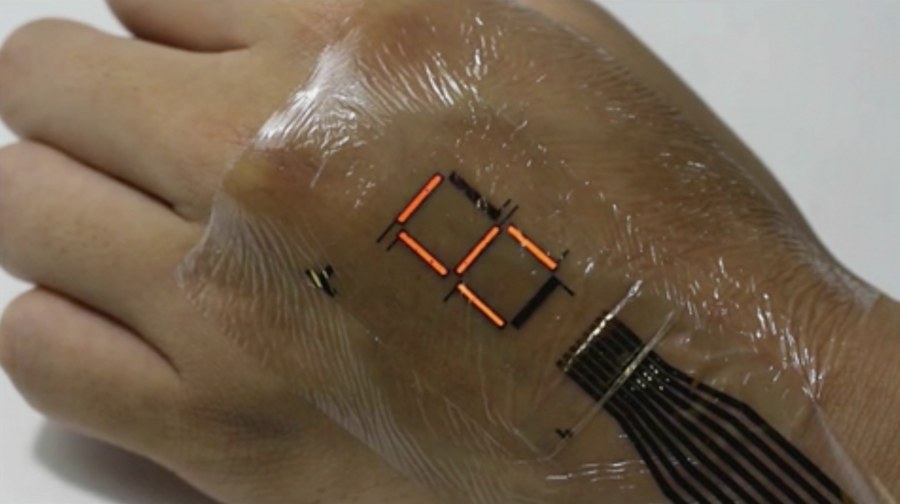Flexible 'e-skin' film lets us turn our bodies into LED displays
Loading...
Researchers at the University of Tokyo have brought us one step closer to the science fiction future our grandparents imagined, by turning electronic skin (e-skin) technology into a light display.
The skin’s developers say their research gives consumers a way to downsize from bulky electronic devices to the streamlined tech of the future.
Thin and flexible e-skin is part of the new generation of wearable electronics, ranging from bulky Fitbits to ultra-thin wearable smartwatches and other electronics. But even those have typically been inflexible – until now.
Electronic skin is a step towards even lighter, more functional wearable tech.
"The advent of mobile phones has changed the way we communicate," said Professor Takao Someya, one of the study’s authors, in a press release. “While these communication tools are getting smaller and smaller, they are still discrete devices that we have to carry with us.”
Now, says Dr. Someya, e-skin can perform the same functions as handheld devices, plus measure stress or emotions. In his vision, e-skin could change communication forever.
“In addition to not having to carry a device with us at all times,” said Someya, “they might enhance the way we interact with those around us or add a whole new dimension to how we communicate."
The possible functions of e-skin are manifold.
According to their press release, electronic skin is ultra thin, ultra flexible, and constructed of layers of silicon oxynitrite and parylene. These layers envelop 3-millimeter-thick electronic devices called Polymer Light Emitting Diodes (PLEDs) and Organic Photodetectors (OPDs), protecting them from from air and water damage.
Each tiny diode functions as a single pixel. When multiple diodes in the electronic skin light up together, they create a display that can include numbers or images.
Researchers say that this PLED film also produced less heat and consumed less power than previous efforts.
The developers of e-skin envision countless uses for devices embedded in the skin-like film, including medical applications like measuring pulse rate or oxygen levels in the bloodstream.
The medical community has long waited for technology that can easily move and flex with the body.
Other uses for flexible, light-up skin range from fitness to fashion. Could photo-tattoos be in the future?
Researchers have been working on this technology for a long time, and have achieved a number of breakthroughs with related tech. Why is e-skin different?
For one, its flexibility surpasses previous attempts to create electronic skin. According to the Verge, you could crumple a patch of the electronic skin, complete with PLEDs, into a ball, then uncrumple it and use it immediately.
Scientists have also previously been unable to solve the problem of natural damage to PLEDs embedded within electronic skin. Air or moisture damage can degrade the technology within other types of e-skin. This new skin, with its alternating organic and inorganic layers, blocks out moisture. A layer that the scientists call the “passivation layer” seals out corrosive elements.
"What would the world be like if we had displays that could adhere to our bodies,” asks Someya, “and even show our emotions or level of stress or unease?”
The study was published online this week in Scientific Advances.








